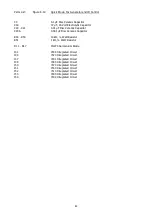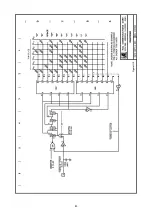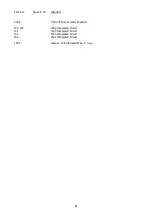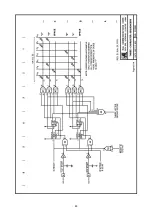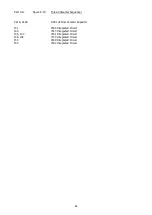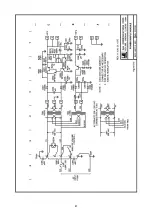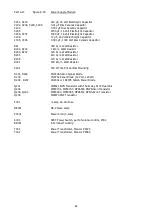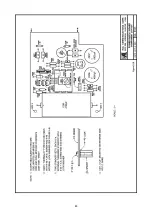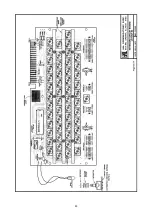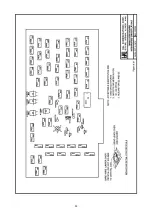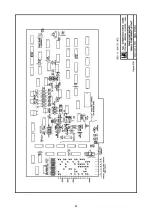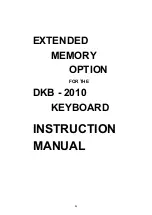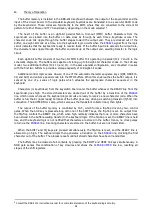
A3
7th Reinstall the bottom plate, sliding the front edge beneath the front lip of the cabinet. Fasten it in
place with the original screws.
The keyboard and buffer are now ready to operate. Refer to Section 3 for instructions on the use of the
buffer.
3.
Operating Instructions
Three keys (CQ, AUX and HERE IS) in conjunction with the SHIFT keys control the operation of the
buffer.
The shifted HERE IS key clears the buffer of its contents. A shifted AUX stops the flow of characters out
of the buffer. The shifted CQ key turns the buffer output on so that the stored characters pass from the
keyboard to the logic circuitry and are transmitted.
It is important to observe the proper sequence of operations when using these keys to control the buffer.
The SHIFT key must be pressed and held down while one of the control keys is struck. The SHIFT key
should not be released until after the control key is released. Otherwise, the character sequence produced
by the control key in its normal (unshifted) mode will be entered in the memory unintentionally.
When the keyboard is first switched or, it is not possible to predict the states that the buffer memory
stages will assume. It is therefore best to type a shifted HERE IS to clear the buffer and prepare it for
incoming keystrokes.
If you wish to use the buffer as an extension of the keyboard's internal three-character memory, type a
shifted CQ. The buffer output will be turned on and the characters you type will pass through the buffer to
the keyboard logic for transmission. If you type faster than the rate at which the keyboard is transmitting,
the additional characters will "stack up" in the buffer and will be passed on to the keyboard logic when it is
ready to receive them.
When the buffer is completely filled, the BUFFER FULL lamp will light. In that case, stop typing until the
keyboard has had a chance to transmit some of the stored characters. As soon as memory space is available
for another keystroke, the BUFFER FULL lamp will go out.
Transmission of the stored keys may be stopped at any time by typing a shifted AUX. The keyboard will
transmit the two characters stored in its internal memory, but will not draw any more characters from the
buffer. To restart transmission, type a shifted CQ. The contents of the buffer may be erased at any time by
typing a shifted HERE IS.
It is possible to use the buffer to store a complete message or character string by typing a shifted AUX
prior to typing the first character of the message. The buffer output will be turned off, and any keystrokes
will be
recorded in the memory but will not be passed to the logic circuits for transmission. When ready to send
the message, type a shifted CQ. Any pauses or gaps which occur when the message is originally typed will
be closed up, as the keystrokes are stacked up sequentially in the buffer. If you wish to erase the memory,
simply type a shifted HERE IS. The memory contents do not recirculate; once the message has been
transmitted, it is no longer present in the memory. If you wish to repeat the message, it must be typed into
the buffer again.
Since the buffer, in effect, stores keystrokes rather than individual characters, the QBF (quick brown fox
message), HERE IS (identifier message), CQ and AUX keystrokes occupy only a single memory location. It is
therefore possible, for example, to store the QBF message and 63 (or 127) other keystrokes in the memory.
Note that the repeat feature of the HERE IS, CQ and AUX keys no longer functions when the buffer is
installed.
The only keystroke which does not enter the buffer is the "break" (BRK) key function. The break key
operates as usual unless the buffer output has been turned off, in which case it is deactivated and has no
effect.
Summary of Contents for DKB-2010
Page 1: ......
Page 20: ...18...
Page 39: ...37 Table 4 3 ROM Converter Input and Output Codes...
Page 52: ...50 Figure 6 1 Logic Circuit Board Test Points...
Page 53: ...51 Figure 6 2 Keyswitch Circuit Board Test Points...
Page 54: ...52 Figure 6 3 Power Supply Circuit Board Test Points...
Page 57: ...55 Table 6 4 DKB 2010 Wire List...
Page 63: ...61...
Page 64: ...62...
Page 65: ...63...
Page 67: ...65...
Page 69: ...67...
Page 71: ...69...
Page 73: ...71...
Page 75: ...73...
Page 77: ...75...
Page 79: ...77...
Page 81: ...79...
Page 83: ...81...
Page 85: ...83...
Page 87: ...85...
Page 89: ...87...
Page 91: ...89...
Page 92: ...90...
Page 93: ...91...
Page 94: ...92...
Page 95: ...93...
Page 96: ...A1 EXTENDED MEMORY OPTION FOR THE DKB 2010 KEYBOARD INSTRUCTION MANUAL...
Page 100: ...A5...
Page 101: ...A6...

